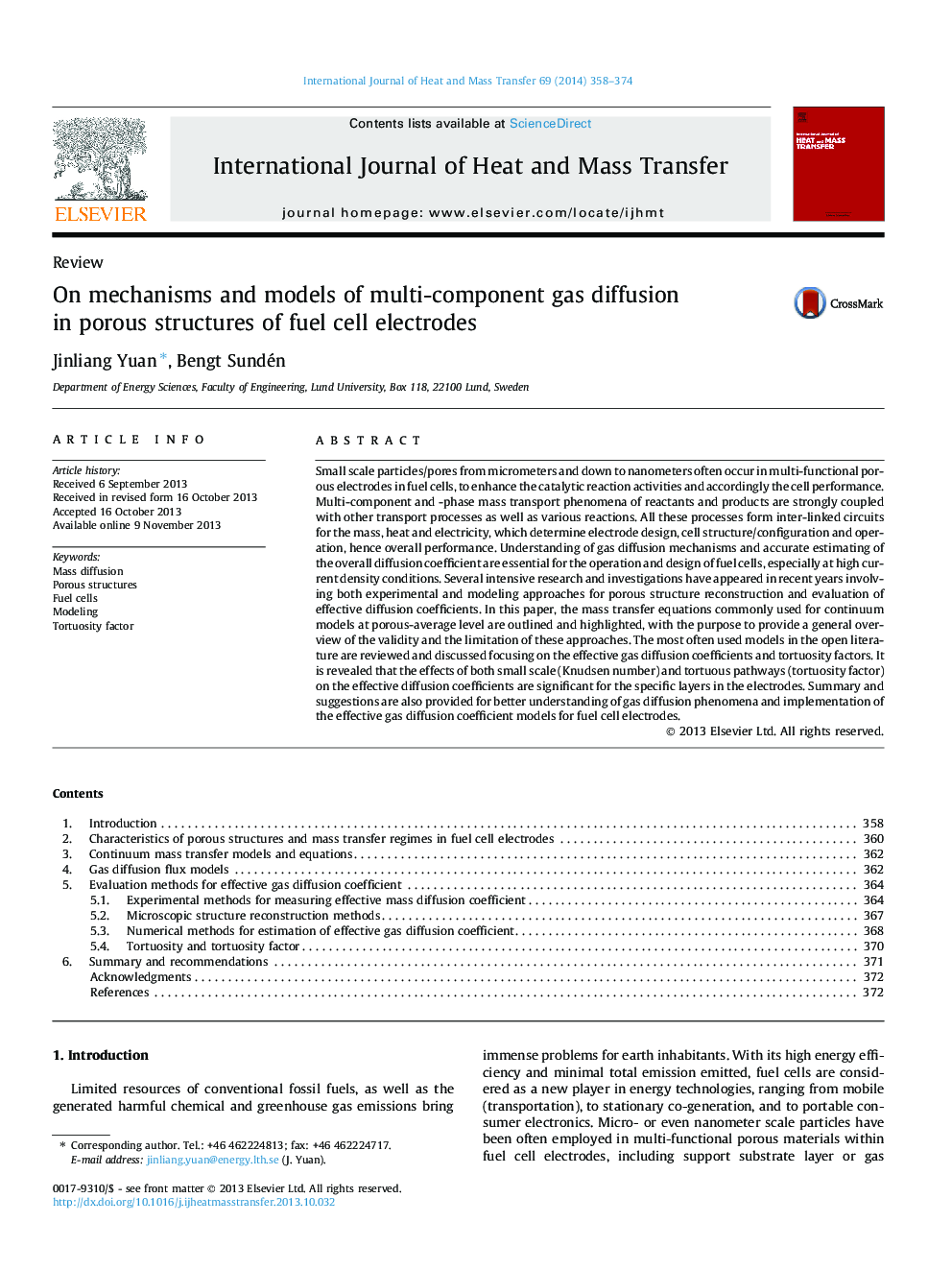| Article ID | Journal | Published Year | Pages | File Type |
|---|---|---|---|---|
| 658090 | International Journal of Heat and Mass Transfer | 2014 | 17 Pages |
Small scale particles/pores from micrometers and down to nanometers often occur in multi-functional porous electrodes in fuel cells, to enhance the catalytic reaction activities and accordingly the cell performance. Multi-component and -phase mass transport phenomena of reactants and products are strongly coupled with other transport processes as well as various reactions. All these processes form inter-linked circuits for the mass, heat and electricity, which determine electrode design, cell structure/configuration and operation, hence overall performance. Understanding of gas diffusion mechanisms and accurate estimating of the overall diffusion coefficient are essential for the operation and design of fuel cells, especially at high current density conditions. Several intensive research and investigations have appeared in recent years involving both experimental and modeling approaches for porous structure reconstruction and evaluation of effective diffusion coefficients. In this paper, the mass transfer equations commonly used for continuum models at porous-average level are outlined and highlighted, with the purpose to provide a general overview of the validity and the limitation of these approaches. The most often used models in the open literature are reviewed and discussed focusing on the effective gas diffusion coefficients and tortuosity factors. It is revealed that the effects of both small scale (Knudsen number) and tortuous pathways (tortuosity factor) on the effective diffusion coefficients are significant for the specific layers in the electrodes. Summary and suggestions are also provided for better understanding of gas diffusion phenomena and implementation of the effective gas diffusion coefficient models for fuel cell electrodes.
